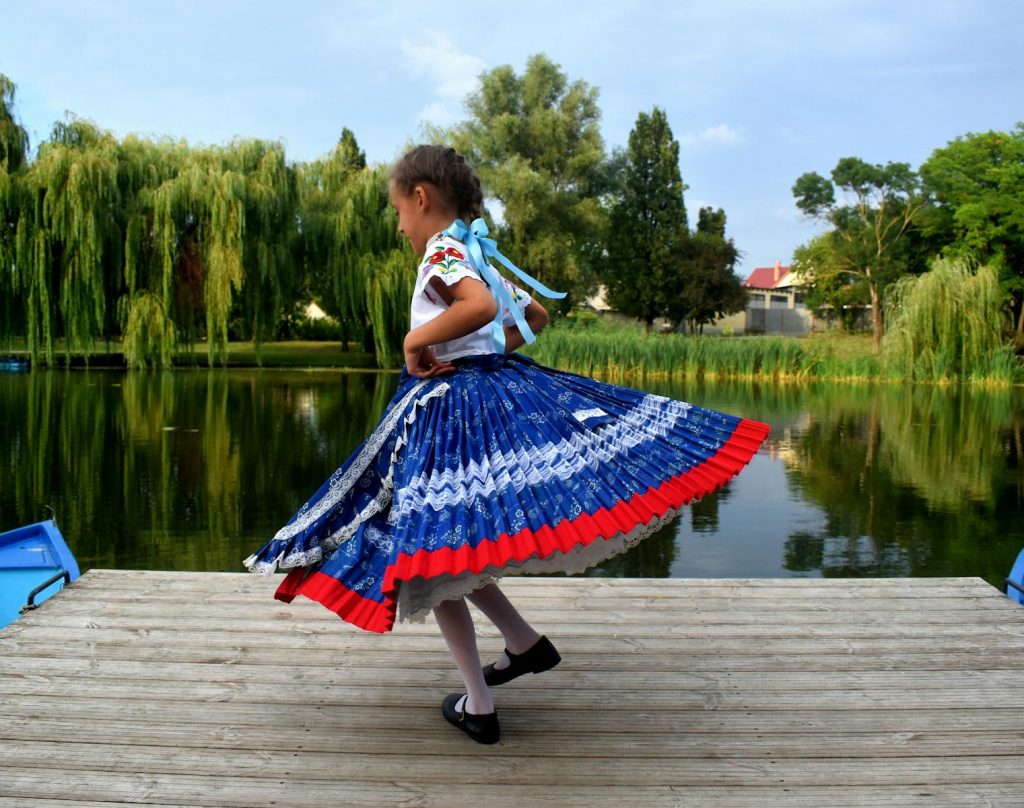How Dance Therapy Helps Children with Emotional Disorders

Dance therapy, also known as dance/movement therapy (DMT), is a form of expressive therapy that uses movement and dance to promote emotional, cognitive, and physical integration. For children with emotional and behavioral disorders (EBD), dance therapy offers a non-verbal way to express feelings, reduce stress, and improve self-awareness. Children who struggle with regulating emotions or managing behavior can benefit from the physical, emotional, and social aspects of dance therapy, which engages both the body and mind.
This article explores how dance therapy can be used to support children with emotional and behavioral disorders, highlighting the benefits, therapeutic techniques, and ways to incorporate this intervention into treatment plans.
1. Understanding Emotional and Behavioral Disorders in Children
Common Emotional and Behavioral Disorders
Children with emotional and behavioral disorders often struggle with regulating emotions, managing impulsivity, or interacting appropriately with peers and adults. Common disorders under this umbrella include:
- Attention Deficit Hyperactivity Disorder (ADHD): Characterized by inattention, hyperactivity, and impulsiveness.
- Oppositional Defiant Disorder (ODD): Involves defiant, hostile, and disobedient behavior, particularly toward authority figures.
- Anxiety Disorders: Include generalized anxiety, separation anxiety, and social anxiety, causing excessive worry, fear, or avoidance behaviors.
- Depression: Symptoms include persistent sadness, irritability, and disinterest in activities, which can lead to behavioral problems.
- Conduct Disorder: Characterized by aggressive behavior, rule-breaking, and difficulties in respecting the rights of others.
These disorders can have significant impacts on a child’s social relationships, academic performance, and overall well-being. Traditional therapy approaches like cognitive behavioral therapy (CBT) and play therapy are often used, but incorporating dance therapy can add a holistic dimension to treatment by addressing emotional regulation, behavioral expression, and physical health.
2. Benefits of Dance Therapy for Children with Emotional and Behavioral Disorders
2.1 Emotional Expression and Regulation
Children with emotional and behavioral disorders often have difficulty identifying and expressing their emotions. Dance therapy provides a safe, non-verbal outlet for expressing complex feelings that they may not have the language to articulate. Movement allows children to release built-up tension, anger, frustration, or sadness in a way that words may not fully capture.
- Emotional Release: Moving rhythmically or freely helps release pent-up emotions in a non-destructive manner. For instance, children can express anger through vigorous movements or convey sadness through slower, more fluid motions.
- Self-Regulation: By connecting their emotions to movement, children can learn to recognize and modulate their emotional states. This process helps develop emotional intelligence and the ability to self-soothe during moments of stress or frustration.
2.2 Enhances Self-Awareness and Body Awareness
Dance therapy helps children become more aware of their bodies and the physical sensations associated with their emotions. Increased body awareness allows children to better understand how emotional states like anxiety or anger manifest physically, such as through muscle tension or shallow breathing.
- Mind-Body Connection: Through guided movements, children learn to notice physical sensations and how their emotions affect their bodies. This awareness can lead to more conscious control over reactions, such as recognizing when they are becoming overwhelmed or agitated.
- Improved Self-Perception: By focusing on movement and body language, dance therapy helps children develop a positive sense of self. Feeling more comfortable in their bodies and how they express emotions through movement can lead to improved self-esteem.
2.3 Reduces Stress and Anxiety
Dance and movement have a well-documented effect on reducing stress and anxiety. The physical activity involved in dance therapy releases endorphins, the body’s natural “feel-good” hormones, which promote relaxation and alleviate symptoms of anxiety or depression.
- Movement as a Calming Mechanism: Engaging in rhythmic movement, such as swaying or repetitive motions, can activate the parasympathetic nervous system, which helps the body calm down after periods of stress.
- Breathing and Relaxation: Dance therapy sessions often incorporate breath work, which helps regulate breathing patterns and reduce hyperarousal in children who experience anxiety or have difficulty calming themselves.
2.4 Improves Social Skills and Peer Interaction
Children with emotional and behavioral disorders often struggle with social interaction, communication, and building relationships with peers. Dance therapy, particularly in group settings, encourages cooperative movement and shared expression, helping children practice social skills in a structured, supportive environment.
- Non-Verbal Communication: Since dance therapy relies on movement rather than words, it provides an opportunity for children to practice interpreting and responding to non-verbal cues, such as body language and facial expressions.
- Collaboration and Teamwork: In group dance therapy, children learn to move together, coordinate their actions, and collaborate on shared goals. This promotes trust, empathy, and a sense of belonging.
- Positive Social Interaction: Dance therapy can foster positive peer relationships by providing a fun and non-competitive setting where children can engage with each other constructively.
2.5 Encourages Behavioral Change
Dance therapy can be an effective tool for addressing specific behavioral issues by providing a positive outlet for energy and emotion. Children with behavioral disorders such as ADHD or ODD may have difficulty managing impulses or regulating their actions, but dance therapy allows them to channel their energy in a productive way.
- Impulse Control: Structured dance exercises that require focus, such as following choreography or mirroring a partner’s movements, help children practice self-discipline and improve attention to detail.
- Behavioral Flexibility: Dance therapy encourages flexibility in behavior, helping children adapt to new movements, rhythms, and group dynamics. This can translate to more adaptable behavior in daily life.
- Non-Aggressive Expression: Dance therapy provides a safe space for children to express intense emotions without resorting to aggression or defiance. Movements can be powerful and expressive without causing harm to themselves or others.
3. Techniques and Approaches in Dance Therapy for Children with EBD
3.1 Free Movement Exploration
One of the core techniques in dance therapy is free movement exploration, where children are encouraged to move in a way that feels natural to them without judgment or restriction. This approach promotes self-expression and helps children tap into their inner emotions.
- Benefits: Free movement allows children to explore their emotional and physical boundaries. It helps reduce feelings of self-consciousness and gives them the freedom to express emotions they may not fully understand or articulate.
- How It’s Used: The therapist might play music and ask the child to move in a way that reflects how they feel in the moment. The therapist then observes and gently guides the child to explore different emotions or sensations through their movements.
3.2 Mirroring and Partner Work
Mirroring is a technique in which the therapist or another child copies the movements of the participant. This method helps children develop empathy, improve their self-awareness, and understand how their actions affect others.
- Benefits: Mirroring fosters a sense of connection between the child and therapist or peers, reinforcing non-verbal communication and helping children feel seen and understood.
- How It’s Used: In a group setting, children can mirror each other’s movements, practicing empathy and collaboration. In one-on-one sessions, the therapist mirrors the child to help them become more aware of their body and emotional state.
3.3 Structured Movement and Choreography
For children with behavioral challenges, structured movement and choreography can provide a sense of control and predictability. By learning and practicing a set sequence of movements, children develop focus, discipline, and the ability to follow instructions.
- Benefits: Structured movement encourages focus and attention to detail. Children learn to follow directions while expressing creativity within a framework, helping to improve self-control and reduce impulsive behavior.
- How It’s Used: The therapist may teach simple dance routines or lead the group in synchronized movements. This technique helps children feel accomplished and builds their confidence as they master the sequence.
3.4 Breath and Movement Synchronization
Integrating breath work with movement helps children regulate their nervous system, improve concentration, and manage stress. Synchronizing deep breathing with slow, mindful movement can reduce anxiety and help children calm themselves.
- Benefits: This technique encourages mindfulness and self-regulation, which are critical for children who struggle with emotional or behavioral challenges.
- How It’s Used: The therapist guides the child to synchronize their movements with their breath, such as moving their arms up while inhaling and lowering them while exhaling. This technique is often used to help children relax and focus.
3.5 Sensory Integration through Movement
Children with sensory processing difficulties, such as those with autism or ADHD, may benefit from dance therapy that incorporates sensory integration. Movement activities that engage the senses help children better process sensory information and develop a more grounded sense of body awareness.
- Benefits: Sensory-based movement helps children feel more connected to their bodies and the environment, reducing sensory overload and promoting emotional regulation.
- How It’s Used: The therapist may introduce props like scarves, ribbons, or textured objects to engage different senses during movement activities. Movement that involves balance, touch, and proprioception (awareness of body position) can help children with sensory challenges feel more in control of their bodies.
4. Incorporating Dance Therapy into a Comprehensive Treatment Plan
Collaboration with Other Therapists and Educators
Dance therapy should be integrated into a child’s broader treatment plan, in collaboration with other healthcare providers, including psychologists, speech therapists, and occupational therapists. This holistic approach ensures that all aspects of the child’s emotional and behavioral needs are addressed.
- Communication with Care Team: Regular communication between the dance therapist and other members of the care team is essential to track progress and adjust interventions as needed.
- School Involvement: Schools may also incorporate dance therapy into special education programs or as part of physical education classes to support students with emotional and behavioral disorders.
Personalized Goals and Progress Monitoring
It’s important to set specific, measurable goals for the child’s participation in dance therapy. These goals can include improvements in emotional regulation, social skills, or impulse control.
- Tracking Progress: The therapist can track progress through observations, behavior logs, or feedback from parents and teachers to ensure that the child is making gains in their emotional and behavioral development.
- Adjusting Techniques: As the child progresses, the therapist can adjust techniques to meet the child’s evolving needs, ensuring that the therapy remains engaging and effective.
Conclusion
Dance therapy offers a unique and powerful tool for supporting children with emotional and behavioral disorders. By using movement as a form of expression, children can process emotions, improve self-awareness, and develop social skills in a safe and supportive environment. Through techniques such as free movement exploration, structured choreography, and sensory integration, dance therapy helps children regulate their emotions, build confidence, and engage in positive peer interactions. When integrated into a comprehensive treatment plan, dance therapy can play a crucial role in helping children with emotional and behavioral challenges thrive both emotionally and socially.

